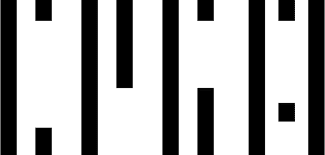-
Galerie Peter Kilchmann is pleased to present the first solo exhibition of the Swiss artist Zilla Leutenegger (*1968 in Zurich; lives and works in Zurich and Soazza) in its Paris gallery, titled "Rien de Lourd."
Since the 1990s, Zilla Leutenegger has established herself in Switzerland and internationally with finesse and poetry as one of the artists who introduced video as an artistic medium. For this exhibition, the artist draws inspiration from the Olympic Games taking place in Paris this summer and creates a new body of works that playfully question the theme of sport and, more specifically, the way movements are inscribed in space. Through these works, Zilla Leutenegger, with her usual familiarity, plays with these contrasts, the movements produced by different disciplines, and an iconography of exhaustion. A drawn female figure is at the center of each scene depicted in the eleven monotypes and the two video installations, with ceramic works also exhibited in the gallery on rue des Arquebusiers.
-
-
"Rien de Lourd" is also the title of one of the two video installations: projected on the wall, the shadow of a boxer passionately embraces a punching bag while three aluminum punching bags are suspended from the ceiling, their surfaces prepared and patinated to resemble the original black leather. Exhausted boxers hug their opponents during the fight and only completely relax once they catch their breath. This essential gesture in the discipline captivates the artist for its contradictions: this embrace is neither softer nor more affectionate. This abrupt and violent hug, lasting only a few seconds, precedes the continuation of a fervent fight.
-
-
On the gallery walls, there is concrete interaction between the video projection and the various projected shadows. The installation unfolds its magic by revealing different forms and atmospheres depending on the spectator's position.
-

-

-
The eleven new monotypes are the starting point of the exhibition and reference the artist's early video works such as "Der Spagat" (1996). Reproduced on paper, the flat bright colors and the clear, simple, and relief-free black lines of the monotypes evoke the posters of David Hockney and Andy Warhol. The recurring female figure in the artist's work is depicted in various acrobatic postures and engaging in multiple sports activities. They remind the preparatory drawings and the variety of research on the representation of the body in motion conducted by the artist. These "alleged characters", like adaptations of something she is not but would like to be (that one is not but would like to be), also echo older video installations such as "ZillaGorilla" (2021), where the artist is dressed as a gorilla, and "Zilla Nina Ballerina" (1996), where she is a ballet dancer.
-
In "Don't Look Back in Anger" (108 x 75 cm), a woman dressed in blue pants and a black top contorts herself to look between her legs against a light orange background. The same figure then appears as a swimmer in "Endless Pool" (108 x 75 cm) – the artist herself is a swimmer – wearing a magenta swimming cap and a leaf green swimsuit in turquoise blue water. In "Skorpion (Scorpion)" (108 x 75 cm), she practices yoga, successfully performing one of the most challenging poses. Zilla Leutenegger thus narrates perseverance, and rigor leading to perfection, the ultimate goal of the athlete. The palette of this work revolves around the color red, symbolizing strength, power, passion, and life, reinforcing the idea of intensity induced by physical effort and sports practice.
-
The upside-down postures in "Voila," "Tumbling," and "Tumbling Naked" (all 108 x 75 cm) seem almost impossible to achieve, requiring immense balance. Yet, the subject appears to achieve them with great lightness. Leutenegger recounts here the limits the bodies face, extreme difficulties that even immense perseverance, laborious training, and maintained physical strength cannot overcome.
In contrast to the acrobatic figures, the artist represents "anti-poses" (“Let it be”, “Mouse”, “I'm not around”, “Whatever makes you happy”, “Odds”, all 108 x 75 cm), where the protagonist is finally seen lounging, curled up, squatting, or lying down. "Let it be" references a photograph taken in the 90s where the artist posed in an identical position.
-
Ceramic installations complete the exhibition. Black glazed dumbbells ("Weights," variable dimensions) are individually mounted on the wall. The visitor is invited to grasp them, weigh them, feel their texture and even engage in some weightlifting exercises. Zilla Leutenegger plays with their ambivalence: the dumbbell itself evokes strength and robustness, while ceramics is a fragile material. The ceramic installation, "Rack" (100 x 50 x 50 cm), holds other dumbbells and barbells. By interacting with the exhibition's works and inviting the spectator to interact with them, the artist proposes confronting them directly with their relationship to the body, exercise, and physical effort. The visitor thus becomes an integral and essential part of the exhibition, engaging in a playful, performative, and introspective journey.
-

Galerie Peter Kilchmann
rue des Arquebusiers, Paris
, 12 July - 21 September 2024Be the first to know updates about Galerie Peter Kilchmann
* denotes required fields
We will process the personal data you have supplied to communicate with you in accordance with our Privacy Policy. You can unsubscribe or change your preferences at any time by clicking the link in our emails.




















